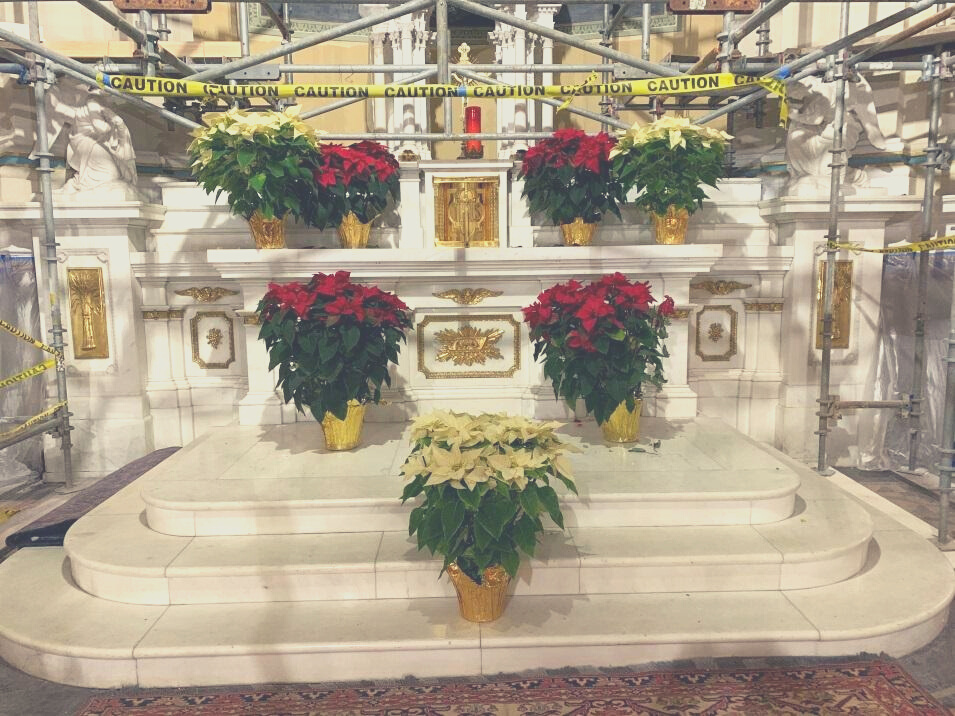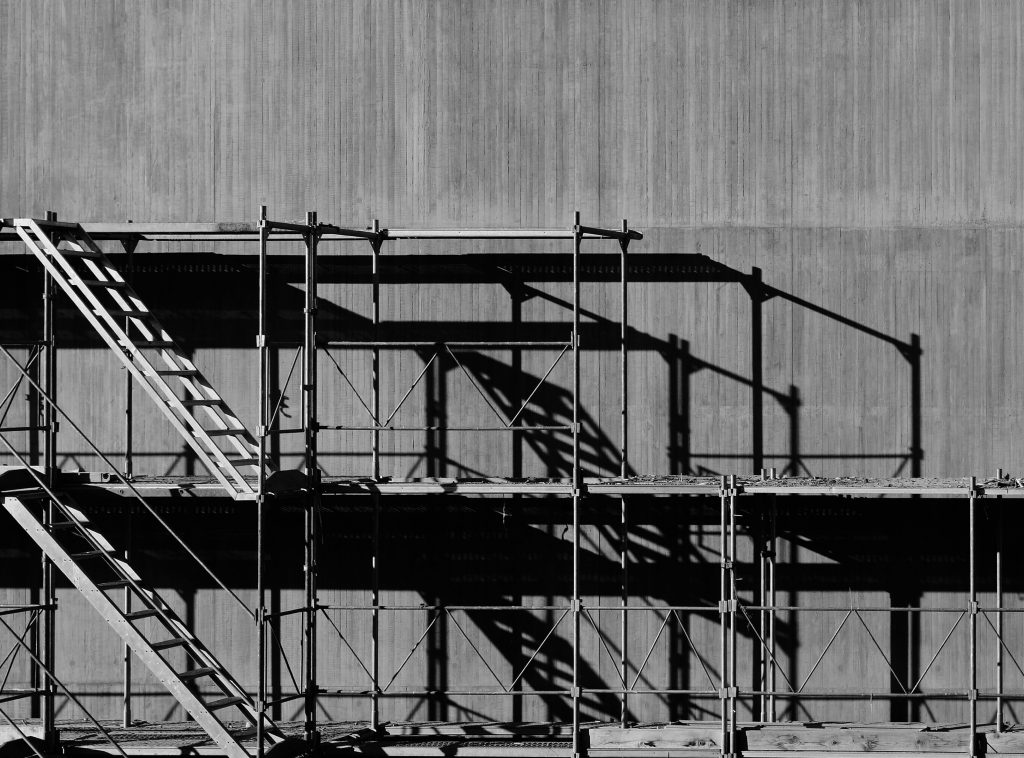Under Construction

The symbolism is just too hard to resist.
My city center parish church was definitely adorned for Christmas —with an interlaced network of harsh, metallic interior scaffolding. On Christmas Eve the priest and the few intrepid parishioners who attended in person had to tuck themselves around and duck under galvanized bars that twisted throughout the pews this year. Online, it was like viewing Mass held in a jungle gym!
A few poinsettias did attempt a merry welcome, and a few candles weakly glowed their blessing into the ever-deepening dusk. The choir, severely reduced to only three safely distanced persons, sang grandly and spiritedly, beautifully really, sending echoes of joy rebounding against cavernous walls.
Something very, very old was happening. But so was something very new.
The church was built in the 1850s. The scaffolding, therefore, is allowing the repair of over a hundred and fifty years of deterioration and damage. It is also lending support to the restoration of traditionally rendered images scattered throughout the interior: Jesus crucified front and center, perfectly posed statues of saints circling the nave, Christ’s life in stone carvings and bright frescos circling the apse and gracing the dome. These are images we all know well. Perhaps they do just need to be dusted off, touched up, replastered a bit, and made nice and shiny and spiffy. Perhaps, with a bit of shoring up and polish, that which seemed so worn out can actually be made whole and, maybe if all goes well, even be made relevant again. And all will be well.
Or will it? In this season of wonder, we wonder. In the 1850s this church was set up on a hill in the countryside, surrounded by green. Now it is part of the inner city, one of the several most impoverished parts of a city that has the highest poverty rate in the country. It is crowded up against row house neighbors, fenced in by cars, circled by tiny streets and alleys, and has a macadam back yard. How does the lush renovation of this once imposing edifice fit into its evolving – and sometimes devolving – neighborhood? Where does the scaffolding really need to go?
Even more, what do need to save and restore and what do we simply need to let go to focus on the true rebuilding we, as a church community, need to do? When all the restoring is finished, will more characters in our ancient story reflect the diversity that was and is? Will more of them be multi-hued, multi-ethnic, even multi-gendered? Will more Biblical women, church mothers and leaders, have prominent positions in the grottos and on the walls? Will empty spaces include rainbows?
While we are pondering all of this, we are also wondering: In a time when we are still so blanketed in so much loss, despite all that could be gained in renovation, how much more must we lose? The comfort of the familiar? The certainty of the traditional? The solace of the known?
Maybe. But not before we first listen to each other tell each other what those losses mean to us, and how we can value – more justly and deeply – what we do, in fact, value.
The scaffolding needs to go up in our own interior spaces as well as in the church. Some of us are already dedicating ourselves to such a rigorous evaluation and transformation. We are doing this alone and we are doing this together.
And we will no longer tolerate anything less of our church.


One Response
I really like what you did with the scaffolding and the metaphor of reconstruction/renovation. Wish they would go beyond the superficial changes to shore up the old church, and make it really new, in some of the ways you suggest. Have a great new year!